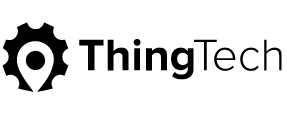Why Companies Already Using Salesforce Need to Integrate IoT Fleet Tracking Data
There’s nothing field service managers like to see more than customer satisfaction going up and escalations going down. Managing to this over the long-term can be difficult, especially during periods of growth. You can keep adding new customers, but what matters most is how many you keep. Not only does acquisition cost more than retention, satisfied customers spend nearly 70% more than new customers!
To achieve sustainable growth through loyalty and retention, your service processes must be flexible, efficient and designed to scale. If your company is already using Salesforce CRM for sales and marketing activities, you can create synergies and meaningful business insights by deploying a fleet tracking solution that also maps data into Salesforce.
ThingTech’s Real-Time Fleet Tracking is an IoT technology that is built on Force.com. Using this framework allows you to store all your data in one place (i.e. Salesforce), find patterns that would otherwise be needles in a haystack, and develop cross-functional relationships across your company.
Everything in One Place
The focus on streamlining and standardization is not unique to field service and fleet managers. Every department within your organization must beat a path along the road to maximum efficiency. We believe that there is limited success in silos, and that businesses will improve efficiencies when employees are connected, and those connected employees have access to relevant, timely data.
Transforming your Salesforce CRM strategy into a Salesforce-centric organization will improve communication, collaboration and operational efficiencies. You will also be able to unlock greater value and potential by storing all your sales, marketing, and operations data in one place.
For mid-level managers, it will make it easier to map, standardize, update, and report on customer information. For top-level managers, it will provide a clear view into business results—past and present—from which patterns will start to emerge.
Find the Patterns
If your company already uses Salesforce, and you’re looking to adopt or replace a fleet tracking solution, your best bet is to partner with a provider that enables a Salesforce integration. Then, you can get closer to identifying your science of success.
First, verification of sales and service will validate the decisions you make based on the data you’ve collected. As you begin monitoring the location of your vehicles, you’ll be able to verify whether your service technician delivered the service(s) they were supposed to, and how quickly a job was completed. Second, you can use vehicle location data to verify what sales activities in the field were completed and how they influenced a specific sales opportunity. Taken together, you’ll better determine what factors influence your success
With all your data in Salesforce, you can see how your vehicles and field workers are contributing to the bottom line. Making connections between prospect/customer locations, miles driven, and work orders can help you better plan for preventative maintenance and capital expenditures. The key to success will be your ability to find patterns that lead to profitability, anticipating how much new business will be coming in, the location of these potential customers, and the resources needed to deliver exceptional service levels as your base grows.
Cross-Functional Capabilities
Communication and collaboration by way of Salesforce will break down silos and help you maintain the flow of information across your organization. With a fleet tracking solution integrated with Salesforce, executives can see what’s happening in the office and in the field in real-time. The speed and quality of decision making will improve when you’re able to quickly juxtapose the cost of marketing with revenue in the pipeline and service-related expenses.
In a boundary-less environment, business development reps can work together with account executives to monitor the growth of accounts they’ve onboarded, and the cost of keeping them, which can reveal insights into which types of prospects are most profitable to target in the future. The marketing team can develop a closer relationship with the sales and field service teams to cherry pick customers for potential case studies based on service-related engagement. And the field service or fleet manager can earn a seat at the revenue table to discuss cost savings, new revenues, and sales in the pipeline to anticipate when and where service may be needed soon.
The reality for field service and fleet managers is that you can’t prevent every accident from happening. But you can prevent delayed responses and unexpected breakdowns, which lead to costly repairs, poor service and customer escalations. A fleet tracking solution that is integrated with Salesforce is a step towards knowing more about where your business is and where it’s going.
Changing the future happens today. Contact us anytime to discuss your fleet tracking needs, or to schedule a free demo.

